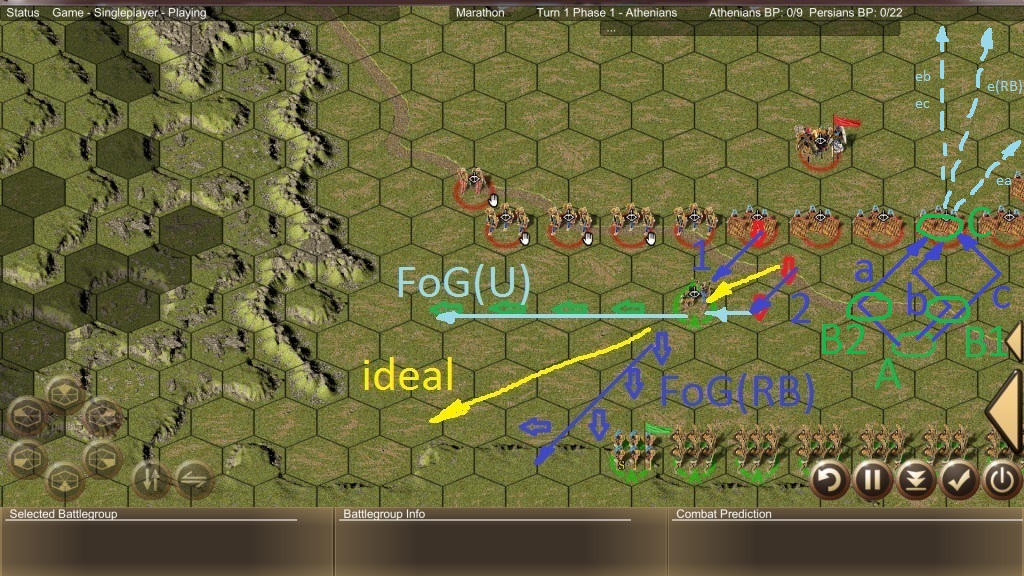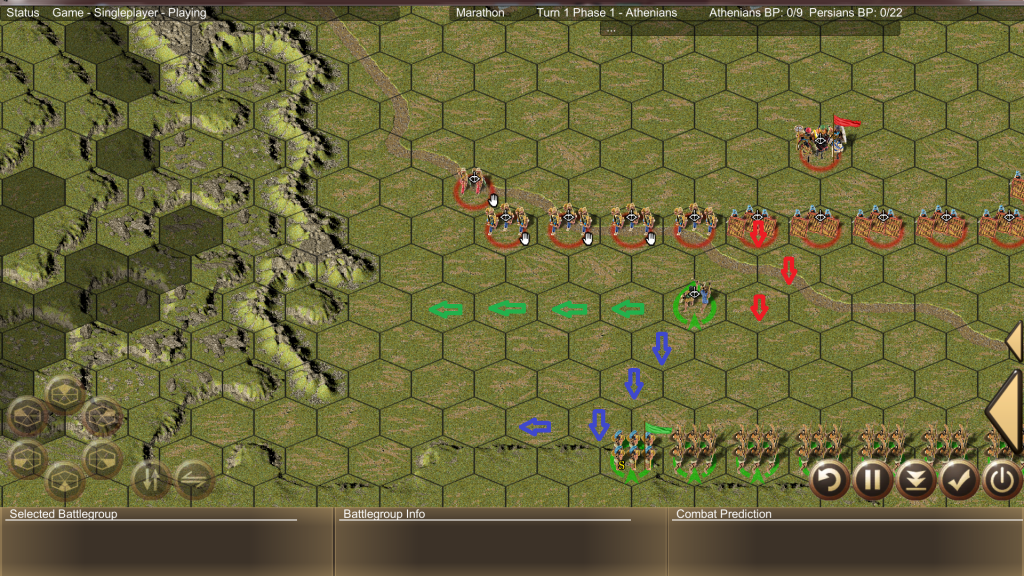Actually, FoG(U) does take into consideration the direction of the enemy attack, it just computes this direction in a different way than FoG(RB).

- FoG(RB) evade direction 02.jpg (323.61 KiB) Viewed 4485 times
While FoG(U) computes the direction of the attack as the vector between charge hex and charged unit hex'es centers, it seems that FoG(RB) considers the vector between charging unit hex and charged unit's hex'es centers (1) or charging unit charge path penultimate hex and charging unit charge path charge hex'es centers (2) (though less much probably).
Considering the direction vector starts from:
- charging unit (turn phase) start hex'es center is too much exposed to long paths direction variation (doesn't take the charge path into account)
- charging unit charge hex'es center is exposed to hex map lattice's variation (in here a vertical attacks must end either in a FL or FR hex, and hence the charge vector varies due to hex map's characteristic)
Neither of them is particularity good, all of them having strengths and weaknesses. The ideal case is probably considering the vector between charging unit penultimate hex and charged unit hex'es centers.
The right side of the picture display this. Charging from A, you can take 3 different paths to attack the same unit: a, b and c. A FoG(RB) direction vector from A to C (charged unit hex'es) won't account for the completely different a, b and c paths.. A direction vector from the charge hexes C's FL/FR to C is especially wrong when considering the charge starting from B1 (and going vertically ahead, but because of hex map's lattice, has to end in either C's FL or FR hex). Again a direction vector starting from charge path's penultimate hex to C seem to be the best:
- a charge path is from B2 (ie A's FL) to C
- b and c charge paths's is from B1 (ie A's FR) to C


